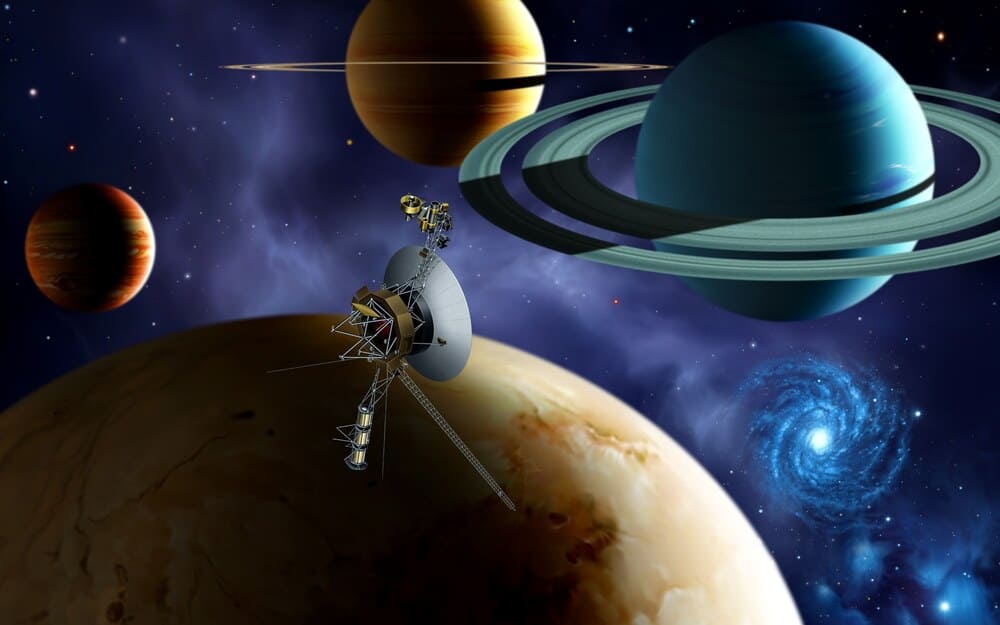Artificial satellites have become indispensable tools in the realm of space exploration, significantly enhancing our ability to explore beyond Earth. These sophisticated machines perform a myriad of functions, from gathering scientific data to aiding in navigation and communication. Below is an overview of the critical roles artificial satellites play in supporting missions beyond Earth.
Types of artificial satellites and their roles
Artificial satellites can be classified into several types based on their functions and the missions they support. Here are some of the primary types and their roles in space exploration:
1. Scientific satellites
Scientific satellites are designed to collect data about space, celestial bodies, and Earth’s atmosphere. They support space exploration missions in several ways:
- Astronomical observations: satellites like the Hubble Space Telescope provide detailed images and data about distant stars, galaxies, and other celestial phenomena, enhancing our understanding of the universe.
- Planetary exploration: satellites orbiting other planets, such as Mars Reconnaissance Orbiter, offer high-resolution images and valuable data about the planet’s surface and atmosphere. They also assist in identifying landing sites for future missions.
- Space environment monitoring: satellites like the Solar and Heliospheric Observatory (SOHO) monitor the sun’s activity, helping predict solar flares and other space weather phenomena that could affect missions.
2. Communication satellites
Communication satellites play a crucial role in maintaining contact with spacecraft and astronauts on exploration missions. They provide reliable communication links between Earth and distant space missions, ensuring that data can be transmitted back and forth efficiently.
- Deep space networks: these are global arrays of large antennas used to communicate with spacecraft on interplanetary missions, such as those heading to Mars or beyond. They ensure continuous communication even as Earth rotates.
3. Navigation satellites
Navigation satellites, such as those in the Global Positioning System (GPS), provide critical positioning and timing information for spacecraft navigation. These satellites help:
- Trajectory planning: accurate positioning helps spacecraft plot precise courses to their destinations.
- Landing and docking: navigation satellites assist with the complex maneuvers required for landing on other planets or docking with space stations.
4. Earth observation satellites
While primarily focused on Earth, these satellites contribute to space exploration by improving our understanding of Earth’s environment and its changes, which is essential for planning sustainable space missions.
- Climate and weather monitoring: satellites provide data on Earth’s climate and weather patterns, which can influence launch windows and mission planning.
- Resource management: they help track resources like water and vegetation, crucial for long-term missions and potential colonization efforts.
Key contributions of artificial satellites to space exploration
Artificial satellites have revolutionized space exploration through their diverse capabilities. Here are some key contributions:
1. Enabling interplanetary exploration
Satellites facilitate exploration of other planets by orbiting them and providing detailed images and data. This information helps scientists understand planetary atmospheres, geology, and potential for life.
- Mars exploration: orbiters like Mars Odyssey and MAVEN have provided insights into the Martian atmosphere, climate history, and surface conditions, aiding in the search for signs of past or present life.
2. Advancing scientific knowledge
Satellites contribute to significant scientific discoveries by providing data that ground-based observatories cannot achieve due to Earth’s atmosphere.
- Cosmic phenomena: observations from satellites have led to discoveries about black holes, dark matter, and the expansion of the universe.
- Solar system studies: missions like the Cassini-Huygens have revolutionized our understanding of Saturn and its moons.
3. Supporting human spaceflight
Communication and navigation satellites are vital for the success and safety of human spaceflight missions.
- International Space Station (ISS): satellites enable continuous communication with astronauts aboard the ISS, facilitating research and operations.
- Future missions: as humanity plans missions to the Moon, Mars, and beyond, satellites will provide crucial support in navigation, communication, and scientific research.
4. Enhancing earth-based research and applications
Data from Earth observation satellites are used in a wide range of applications that indirectly support space exploration by improving our understanding of the environment and helping manage Earth’s resources efficiently.
- Environmental monitoring: satellites track environmental changes that could impact future space mission planning and sustainability.
- Disaster management: they provide real-time data for disaster response, ensuring that resources are managed effectively.
Challenges and future directions
While artificial satellites offer significant benefits, they also face challenges:
- Space debris: the growing amount of space debris poses a risk to satellites and future missions. Efforts are underway to develop strategies for debris mitigation and removal.
- Technological advancements: continued innovation is needed to improve satellite capabilities, such as enhancing data transmission speeds and developing more efficient power systems.
- International collaboration: as space exploration becomes more global, international cooperation will be essential to manage shared resources and address challenges like space debris.
Future missions
Upcoming missions will rely heavily on artificial satellites for success:
- Artemis program: aimed at returning humans to the Moon, this mission will use satellites for communication, navigation, and scientific data collection.
- Mars Sample Return: this mission will involve multiple satellites to facilitate the collection and return of samples from Mars to Earth.
- Exploration of moons and asteroids: satellites will play a key role in missions to explore moons like Europa and asteroids, providing valuable data about their composition and potential for supporting life.
Artificial satellites are integral to space exploration, enabling missions beyond Earth by providing critical data, communication, and navigation support. As technology advances and exploration efforts expand, the role of satellites will continue to grow, unlocking new possibilities for understanding the universe and our place within it.


